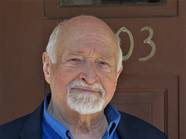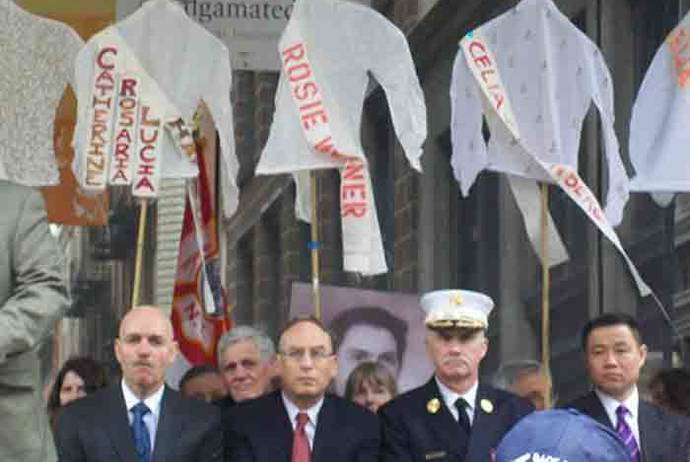Many people say Math is the only universal language. Numbers are the only currency accepted everywhere and although Arithmetic, Physics and their notions are often obscure and detached from our emotional life, we often look for a meaning in the structure they provide us and for the objectivity beyond pre-conceived ideas.
It is fascinating therefore to see a writer, Paolo Giordano - also a young physicist – through a simple mathematical reference at the center of his book, generating such a “buzz” for what turns out to be a very emotional and heartfelt story, driven by the quirky and endearing personalities of its main protagonists.
“The Solitude of Prime Numbers” is not a book about Math but - like Math - it has a very universal and objective feel which has allowed it to become an International bestseller. The original title wasn’t even meant to be linked to a mathematical principle and yet, as Giordano explained at a lecture at Casa Italiana Zerilli-Marimò (NYU) on March 22, 2010, it’s one of the main reasons why the book is so successful everywhere, creating a perfect mix of deep intellectual intuitions and sincere and honest writing.
The story revolves around Mattia and Alice and follows them at various stages of their young life. Both traumatized as children they grow up living parallel lives of a sort, never completely opening up to each other.
Giordano, who won the most important literary prizes in Italy (Premio Strega and Campiello) selling millions of copies of his book, is a captivating writer who alternates gloomy and “dark” moods to very whimsical and poetical ones, combining modern settings to very archaic instincts. The story is set in Turin (Giordano’s hometown), in Northern Italy, but it’s not the Italy a foreigner expects. It’s realistic and yet not limited by cultural filters. Giordano, born in 1982, also gives the prospective of his generation and part of the country that hasn’t been represented enough, especially abroad.
Interviewed by Antonio Monda, NYU Professor and journalist for Repubblica, Giordano explained how his protagonists are like prime numbers, “easy to define, not dividable by anything other than themselves and difficult to solve”. More precisely they are like “twin prime numbers”, couples of prime numbers separated by an even number, pairs that go together but are never really close to each other.
The lecture hosted by Casa Italiana allowed for a pleasant and meaningful discussion with Prof. Monda who highlighted the essential themes and motifs of the story and reflected on Giordano’s writing. The author explained that “most authors write their first book as manuscripts about themselves, their life, while I took a more objective approach using the third person and two protagonists. Yet, not only in the circumstantial details such as the fact that Mattia is a physicist or the city is Turin, I think that my deepest fears and personal thoughts are captured by it”. Monda defined the book “sincere, honest, intelligent, personal and painful”. The director of Casa Italiana Stefano Albertini expressed his goal and interest in bringing “more Italian titles on the US bookshelves and more young artists to Casa Italiana”
“The Solitude of Prime Numbers” is being adapted into a movie, currently in post-production and Giordano said he was really satisfied with the adaptation (he co-wrote it) and had “looked for a production that wouldn't necessarily be big, but would do a good job”.
Paolo Giordano was so kind to share some of his time with me for an interview at the Cosmopolitan Cafè in Tribeca where we explored even more of his story and discussed the reason for his New York visit: the publication of the book in the United States.
My first impression when I read your book in Italian was that the story could be set anywhere, even New York, that this “slice” of Italy wasn’t something hard to contextualize or to be appreciated only with a certain Italian cultural background. Nor was it a folkloric or touristy piece brought abroad. It was something very “exportable” that I could give to an American friend as if I were handing him a David Foster Wallace book. Even the New York Times review didn’t emphasize the fact you were Italian. Do you agree? How important is the story's setting, for you?
It is indeed a very de-contextualized story in its essence, but it’s not something that I rationally pursued. I think it reflected some of the cultural references I had in mind growing up. I always read a lot of American literature and watched many North-European movies and that idea of the small town, a bit isolated an anonymous, where you have the School, the River, the House stuck with me: it wasn't anything too specific or typically Italian. But at the same time the novel is very Italian, in the sense that it reflects Turin, an atypical city, which is in itself less contextualized.
What do you think Turin adds to the story?
Well, as I was saying it kind of removes the story from other typical Italian settings, that have a need for more specificity and Turin is a city very similar to the big European cities or even New York. What it adds is an essential atmosphere for the book: somewhat dark, foggy and cold…
Do you feel like our generation, your generation of Italian writers, is more “globalized” and more able to overcome stereotypes?
I have to admit that I do belong to what ‘s generally called the MTV generation, that developed its tastes in the 1990s and is very well connected to the rest of the world. There were external stimuli coming from abroad; while growing up I would intentionally search for foreign writers or artists as well as Italian ones. It's definitely something that has allowed me to play the right cards abroad and communicate more effectively today.
As far as my generation of writers is concerned I believe that there are two opposite approaches which are both very effective and I both admire. You either choose to be more “general” or you go for a very specific and realistic story, such as Gomorrah, which becomes universal for its precision and detail.
What makes your characters Alice and Mattia typically Italian?
Nothing in particular and also, in a way, everything about them. Perhaps, more specifically, there is this moment in the book in which Mattia has to go study Physics in Copenhagen and he's afraid to leave his hometown, his country. I had the same fear when I had the opportunity to go study abroad, between my degree and my PhD, and even if I knew it was the right thing to do, I didn’t feel like it. I don’t know if this is specifically Italian but it’s true that as Italians we feel very attached to the place where we grow up and to our roots, and are less prone to move around during our college years, which is not necessarily a negative thing.
What do you think of Italians studying abroad then?
Even if I didn’t do it, I believe that it is very healthy and important and formative to go abroad for some time in your life. It’s a journey you need to be willing to embark on.
Were you able to follow the translation of your book?
Yes, I read the final version and particularly this American edition, which is re-edited from the British one.
Is there anything that changed, anything that shifted meaning?
Not really. Although the British version is definitely the one that in terms of writing is the farthest from the original and is often pretty free, it does keep the mood and the meaning exactly as it was thought.
As a Physicist and a Mathematician, how important is a scientific, rigorous method in your writing? Do you emphasize the technical aspects?
It makes me pay more attention to technical aspects of writing and to the general structure. I don’t identify myself with writers like Italo Calvino who believed in the “scientific novel”, which might be very intellectually stimulating or well-constructed but sometimes leaves out the deepest emotions. For me the most important thing is always to start from feelings and emotions and then the more I manage to shape these emotions, to give the story a structure, the better it is.
Math has definitely helped me to research a linguistic and stylistic perfection. I also love books that have a pretty loose structure or are purposely disconnected, but that’s also a kind of structure influenced by Physics.
I particularly enjoyed the first two chapters which focus on the protagonists’ childhood. They are fresh and they portray children in a very original and honest way and they trigger the entire plot. Do you have any childhood memory that made you the person that you are now, that drove you towards writing?
It’s interesting because I find it very natural to write about children and often the explanation that I give myself is linked to when I was a young child. Although I didn’t have any particular trauma like Alice and Mattia, I was over-emphatic towards everyone, eager to always be accepted. I was often influenced by other people’s thoughts and ideas but mostly I was afflicted by other people’s stories. I felt like they were my problems or my own emotions even if they belonged to someone else and I was never really able to detach myself from them and say “this has little to do with me”. I was always kind of anxious for somebody else and this trained me to sympathize with my characters, which is the most important thing.
What was your experience with the Italian publishing and literary scene?
All the prizes I won, the events I took part in and the attention I received obviously took me by surprise. I was almost a “virgin” in the Italian cultural scene and it was good because this way I didn’t have time to build up ambitions and I managed not to get caught up in the rush of the race or the complications any industry has. I went from 0 to a 100 very quickly and it was life-changing.
What about here in New York? Do you feel your book is well received? Are you comfortable with the publishing business here?
Although I haven’t been here for long I enjoyed holding lectures and book readings. The audience has been very kind and open so far and I see similar dynamics in the publishing business: the way you work with editors, publishers, the way I approach reviews and the way newspapers cover your events or books is pretty much the same.
What I noticed here, at least in New York, is that cultural events such as book readings are not something “exceptional” but they are a thriving part of the daily life and people seem more used to them and more comfortable within the structure of these events. Sometimes it might seem like reading and writing are treated more seriously here, as a common, daily occupation.
One of the main themes in your book is “solitude”. Is this a constant of our modern world and of cities like New York?
I actually disagree with this, because the idea that big cities like Turin or New York are linked to solitude is only partially true. I think it’s much worse to feel different and alone in a smaller community, a little town in the country-side, where everyone has known each other for their entire lives, on the contrary to New York where you can be whoever you want. I think “solitude” is more of a common anxiety among us today, a fear of something, but not necessarily a reality.




































